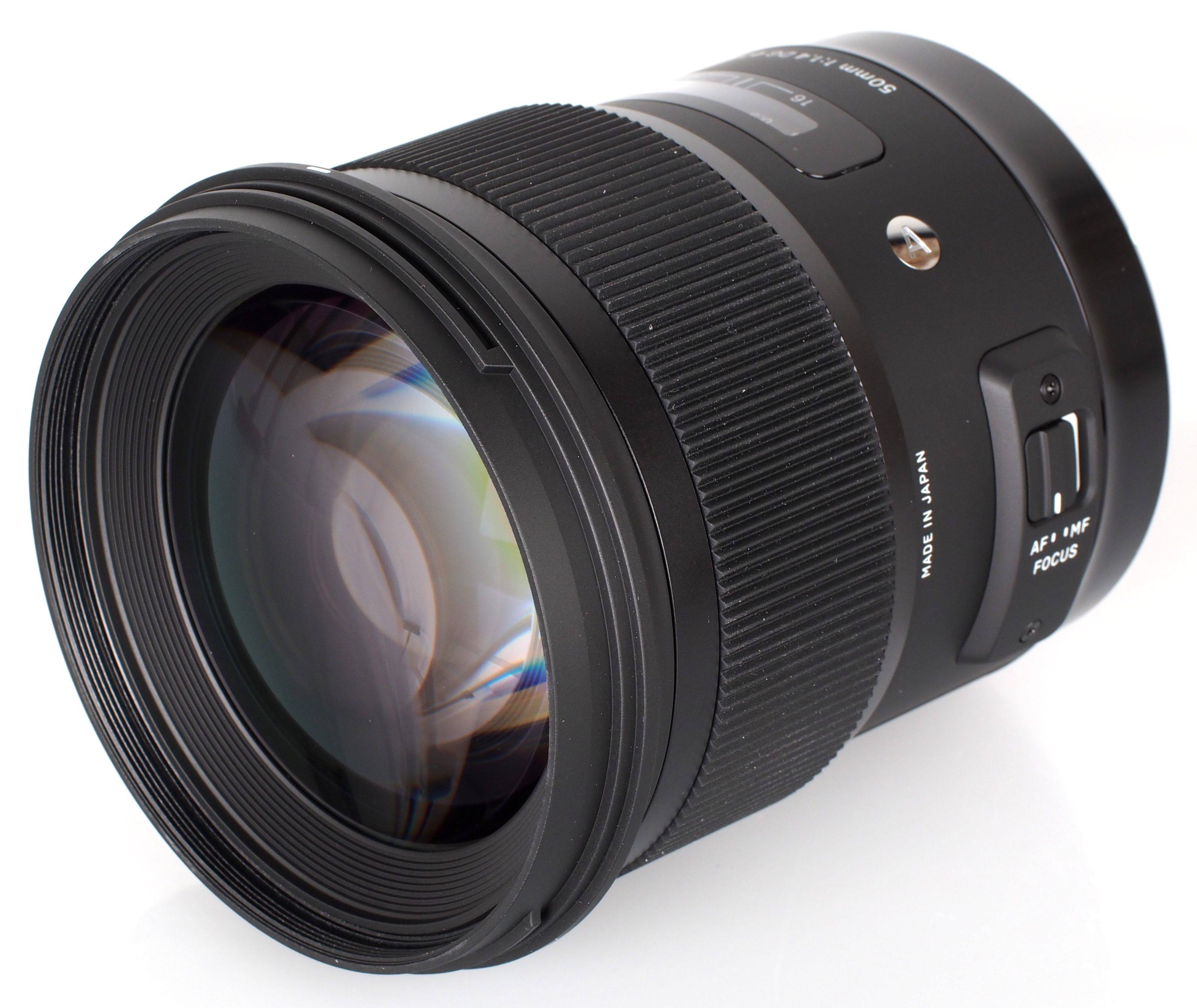Sigma 50mm F1.4 DG HSM Art Lens Overview
When Sigma released its first aperture “fifty dollars” a few years ago, many photographers gave a very unambiguous assessment of what happened: a third-party manufacturer encroached on the sacred - creative optics with an individual pattern, which was traditionally famous for “brand” aperture fixes. However, it turned out that corporate identity for modern photographers is not as important as sharpness. Here she was different new lens!Canon EOS 6D / Canon EF 35mm f / 1.4L Installations: ISO 100, F2, 1/320 s
And the optically identical fifty dollars released with different mounts began to be sold like hot cakes. And if so, they thought at Sigma, then why not set your own tone in this market segment? Why is Sigma worse than Carl Zeiss? And in 2014, the company created its second fifty dollars, now in the framework of the ART series. This series combines creative optics with outstanding performance. Today, this lens - Sigma 50mm F1.4 DG HSM Art - is in our edition. Check what he is capable of? Its cost, size and weight clearly indicate that very interesting results are expected from this fifty dollars!
Sigma 50mm F1.4 DG HSM Art
Optical lens design
Canon EOS 6D / Canon EF 35mm f / 1.4L Installation: ISO 160, F1.4, 1/125 s
If you want to focus manually, then consider: the focus ring is small. For a photo, this means almost nothing, but smooth refocusing during video shooting will not be as easy as, for example, with non-autofocus Carl Zeiss. The minimum focusing distance is 40 cm, which is usual for fifty dollars. For macro photography this is not enough, but shooting flowers with a beautifully blurred background will definitely work.
Canon EOS 6D / Canon EF 35mm f / 1.4L Installations: ISO 100, F1.4, 1/4000 s
Maximum shooting scale
Canon EOS 6D / Canon EF 35mm f / 1.4L Installation: ISO 100, F1.4, 1/400 s
Canon EOS 6D / Canon EF 35mm f / 1.4L Installations: ISO 100, F1.4, 1/320 s
Canon EOS 6D / Canon EF 35mm f / 1.4L Installations: ISO 100, F1.8, 1/200 s
Canon EOS 6D / Canon EF 35mm f / 1.4L Settings: ISO 100, F2, 1/160 s
Canon EOS 6D / Canon EF 35mm f / 1.4L Installations: ISO 100, F2.8, 1/80 s
Canon EOS 6D / Canon EF 35mm f / 1.4L Settings: ISO 100, F4, 1/40 s
Canon EOS 6D / Canon EF 35mm f / 1.4L Installations: ISO 10000, F1.4, 1/160 s
Canon EOS 6D / Canon EF 35mm f / 1.4L Installations: ISO 200, F1.8, 1/40 s
The backlighting does not spoil the quality of images: glare and flare are not formed. Chromatic aberration you will certainly find in the pictures. But their level will be extremely low for fast fixation. Moreover, it must be taken into account that this lens is not “native” to the camera, and chromatic aberration is not suppressed by software during intracameral JPG conversion. With post-processing, you can easily reduce them to an already low level of almost zero.
Canon EOS 6D / Canon EF 35mm f / 1.4L Installations: ISO 100, F1.4, 1/160 s
Things are great with vignetting. It is noticeable only at f / 1.4 and f / 2, and even then the level of darkening of the corners is relatively low. Here, it turns out, why was such a giant diameter of a front lens so huge for a fifty dollars.
Vignetting test
Canon EOS 6D / Canon EF 35mm f / 1.4L Installations: ISO 100, F1.4, 1/640 s
Canon EOS 6D / Canon EF 35mm f / 1.4L Installations: ISO 100, F2, 1/320 s
Canon EOS 6D / Canon EF 35mm f / 1.4L Installations: ISO 100, F2.8, 1/160 s
Canon EOS 6D / Canon EF 35mm f / 1.4L Settings: ISO 100, F4, 1/80 s
Canon EOS 6D / Canon EF 35mm f / 1.4L Installations: ISO 100, F5.6, 1/40 s
Canon EOS 6D / Canon EF 35mm f / 1.4L Installations: ISO 100, F8, 1/20 s
Canon EOS 6D / Canon EF 35mm f / 1.4L Installations: ISO 160, F1.4, 1/160 s
Canon EOS 6D / Canon EF 35mm f / 1.4L Installation: ISO 160, F1.4, 1/125 s
conclusions
The Sigma 50mm F1.4 DG HSM Art is the sharpest full-frame fast shutter that has ever participated in our tests. Already at the open aperture, he gives such a sharpness that many of his competitors have not dreamed of. This is a true masterpiece of optics, embodying the victory of modern technology over all possible distortions. From a technical point of view, it provides flawless shots. Vignetting and chromatic aberration are kept to an absolute minimum. The only subjective disadvantage of this model can be called not too expressive, although correct bokeh. But that’s the price tag for perfect performance. We recommend this lens primarily to all wedding and reporting photographers because of its highest sharpness on an open aperture. Sigma 50mm F1.4 DG HSM Art will help you to forget about the problem of lack of light once and for all, allowing you to get great pictures already on the open aperture. However, the lens will perfectly cope with any other genre, but only if you are ready to put up with its considerable weight.Pros:
- highest sharpness with open aperture;
- extremely low chromatic aberration;
- high contrast;
- very weak vignetting;
- fast autofocus;
- hood and waist pouch included.
Minuses:
- correct but inexpressive bokeh;
- big size and weight.


